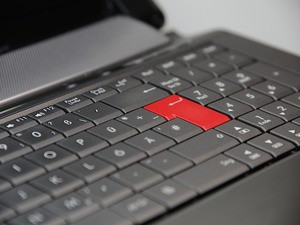 Internet Explorer. One of the most reviled pieces of software in the history of software. It’s bloated. It’s slow. It’s buggy. It just doesn’t work very well, and it never has.
Internet Explorer. One of the most reviled pieces of software in the history of software. It’s bloated. It’s slow. It’s buggy. It just doesn’t work very well, and it never has.
Microsoft built it in a rush and on the fly in response to Netscape Navigator. They were forced to do so because they essentially ignored the internet and regarded it as a toy when it was first commercialized, and have been playing catch up ever since.
This is, and has been, the basic story arc of Microsoft in every aspect of the internet. When handhelds began appearing on the scene, Microsoft was still attempting to pursue its “three leg” OS strategy. Essentially, this amounted to trying to maintain three separate OS’s and make them cross-compatible with one another: NT, XP, and CE (Microsoft’s original attempt to create a handheld OS).
It was a spectacular failure that led to Microsoft rethinking their entire strategy, which led to the creation of Windows 8, which was the company’s attempt to unify the “three legs” into a single OS. Unfortunately, that too was a spectacular failure and not at all well received by the public.
This in turn has led to the development of Windows 10, which is Microsoft’s latest attempt to both maintain its dominance in the enterprise and personal OS space and finally make something worthy for the exploding handheld market. As a part of this initiative, the early word was that the much reviled Internet Explorer would be completely done away with, to be replaced by a newly redesigned browser, code-named Spartan.
Not So Fast…
That was the early word. The problem with that plan was that Microsoft went down the same road they ventured down with Windows 8. The idea was that they’d make a wholly new browser, but make it backwards compatible, such that all the websites that have been designed to be optimized for viewing with IE would require no changes in order to remain optimized for Spartan.
That turned out to be problematic. So problematic, in fact, that the company walked the strategy back. The revised strategy is now that they’ll ship Windows 10 with two browsers. The latest version of Internet Explorer AND Spartan. Internet Explorer will no longer officially be supported, so the expectation is that people will slowly begin to recraft and re-optimize their sites for Spartan. The unfortunate side effect of this is that Windows, already seen as bloatware by many, will now have even more overhead since it will be supporting two browsers, at least for the time being.
Additionally, given Microsoft’s historic weakness where all things internet are concerned, there is little confidence that this, their latest attempt to get it right, will be successful.
The long and the short of it though, is forget what you’ve heard. Although Internet Explorer is morphing into Spartan, the old, crash-prone IE will still be around. It IS on Microsoft’s radar to eventually do away with their old browser, but that won’t be happening any time soon. For that, we’ll have to continue to wait.

 (918) 234-1077
(918) 234-1077 
